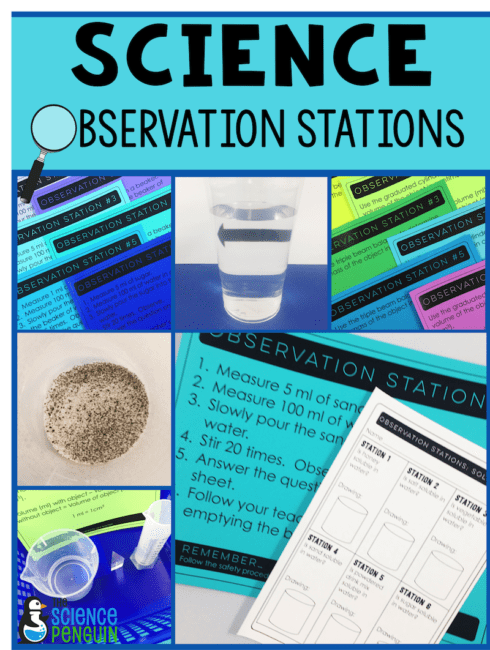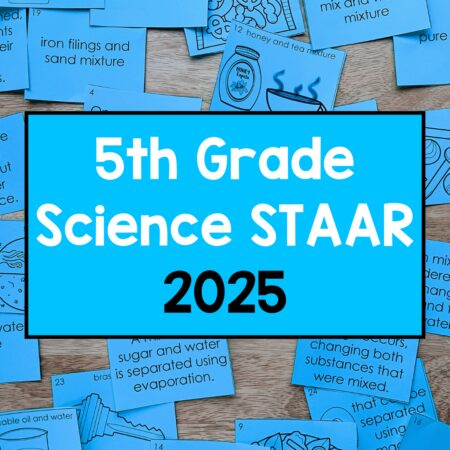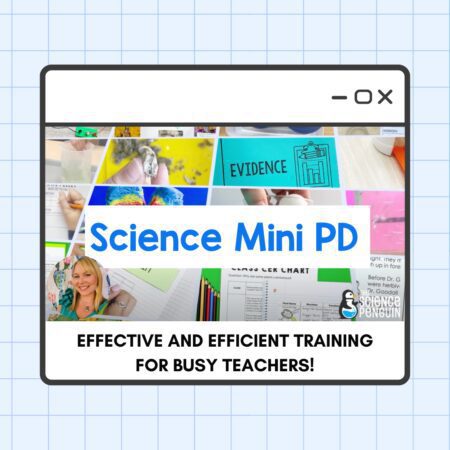 Do you ever wonder how to prepare students for science testing with all of the strange scenarios they might encounter in the questions?
Do you ever wonder how to prepare students for science testing with all of the strange scenarios they might encounter in the questions?
I was looking over released STAAR questions for circuits and I just could not believe how crazy some of these circuits pictured were. Would students who understand how to build a simple circuit be able to analyze one with wires going in every direction? Probably not. This is when I decided to create Observation Stations.
These aligned, rigorous resources will allow your students to experience different scenarios they might encounter on a standardized test. They talk with other students, move around the room, and draw conclusions.
Each set contains 6 stations that students rotate through during one class period and includes materials lists, student pages, and station directions.
What Observations Stations are Available on TpT?
Physical Science
NOTE: I recommend the Physical Science Observation Stations Bundle which includes the nine hands-on sets listed below.
1. Mixtures Observation Stations allow students to observe how some physical properties of ingredients change when a solution is made, while those in a simple mixture stay the same.
2. Circuits Observation Stations allow students to explore building circuits and how removing a wire or opening or closing a circuit can change how many bulbs are lit.
3. Mass and Volume Observation Stations allow students to practice determining mass using a triple beam balance and determining the volume of an irregularly shaped object using a graduated cylinder of water.
4. Relative Density Observation Stations allow students to observe how matter can be classified based on relative density using water as a reference point.
5. Solubility Observation Stations allow students to observe how matter can be classified based on its solubility in water.
6. Electrical Conductivity and Magnetism Observation Stations allow students to test objects to determine their electrical conductivity and magnetism.
7. Spring Scales Observation Stations allow students to practice measuring force with a spring scale.
8. Reflection of Light Observation Stations allow students to explore the how light behaves with a mirror.
9. Refraction Observation Stations allow students to explore different instances of refraction.
Life Science
10. Fossils Observation Stations allow students to draw conclusions about 6 different fossil scenarios.
11. Food Webs Observation Stations allow students to interpret food webs, food chains, and interactions in ecosystems.
12. Traits and Behaviors Observation Stations allow students to identify inherited traits, instincts, learned behaviors, and acquired traits for 6 sets of observations.
13. Comparing Adaptations Observation Stations allow students to compare and contrast the external structures and functions for 6 sets of organisms.
Texas Teachers! Using the TEKS to prepare for 5th grade STAAR? Check out my 5th Grade Science Planning Guides for day-by-day activities for the whole year! Best of all, the guides are free!
What are teachers saying?
“Observation stations have been one of the best investments I have made on TpT. One of the skills my students have the greatest deficit in is making scientific observations and transferring that to sentences and communicating those observations. This is a product that all science teachers in Texas should have.”
“I’m loving these new observational labs. It is a great way to review for the students. I appreciate the graphic sources that relate to items they will see on high stakes testing!”
“Love how the Observation Stations require the students to make scientific observations, something they struggle with. The content is rigorous and specific to the topic. One of my favorite purchases!”





5 thoughts on “A Simple Strategy for Science Test Prep: Observation Stations”
Useful tips and Strategy for Science Test Prep. Thanks for sharing such an informative blog post.
I teach 6th grade earth science, do you have stations for this grade and topic? They sound awesome, and I’m looking for station activities for my kids. Thank you!
I also teach Earth/Space 6th grade. Recommendations?
Do you have any Earth Science observation stations available? These all look amazing.
Hi there– just one for Earth’s Changes. 🙂